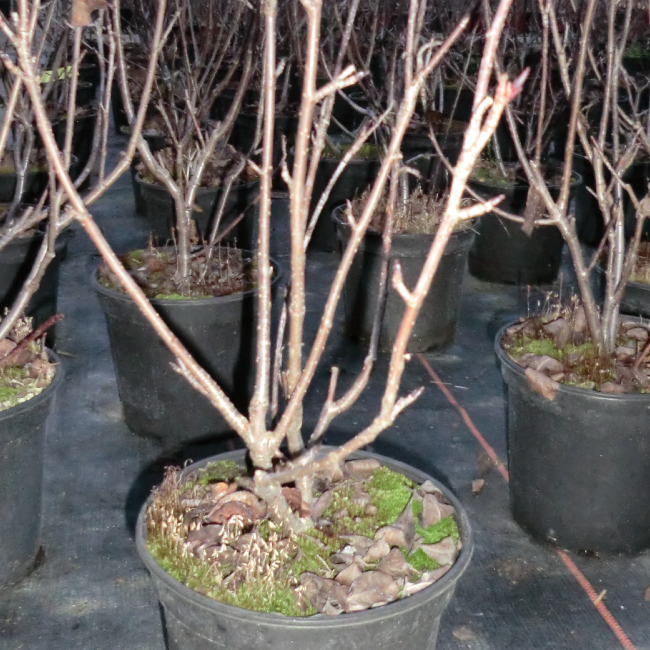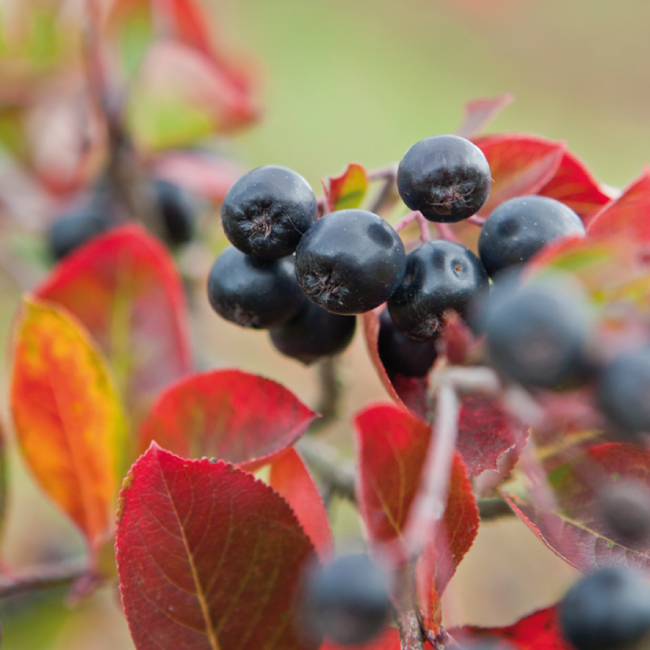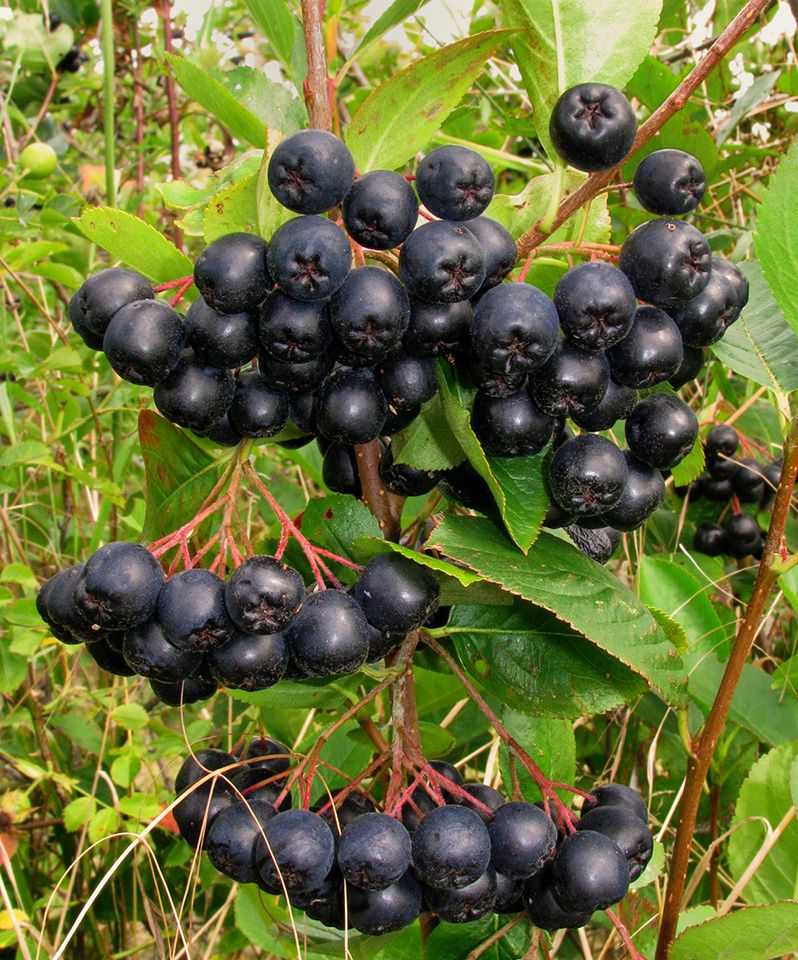
Let us introduce:
Aronia. Specifically, and to be botanically correct: Aronia melanocarpa Nero. A shrub which looks for its equals, und enriches every diet with its fruits. Almost forgotten, the small Aronia berries are experiencing a comeback, decorating front gardens as well as entire regions.
Natural foods with an extraordinary high nutrient density, including vitamins, minerals, fatty acids and antioxidants, are called superfoods. This group includes many exotic fruits, such as acai, goji, moringa and matcha. However, there are plenty of domestic, European foods that also provide important nutrition, such as beetroot, curly kale, walnuts, elderberries or Aronia berries.
Together with short transport times and gentle processing, the Aronia berry is a sustainable foodstuff from this area. We only process Aronia berries of high-quality for our products.
We are happy that we can offer you domestic Aronia juices and support the region with a local value-creative chain. Because we are not able to cover the demand with German Aronia berries, we source Aronia berries from European organic production. Our goal is – in the medium term – to grow this unique berry exclusively in Germany and encourage as many farmers as possible to convert their farms to the organic agriculture.
The History of Aronia Berries
The history of Aronia berry begins in North America, where it was highly valued as early as by the indigenous people as winter provisions.
Fruit Growing Pioneer
The Russian pioneer in the realm of fruit growing, Ivan V. Michurin (1855-1935), discovered Aronia in about 1900, while he was investigating robust and frost-resistant species of fruits, which were supposed to feed population in the cold North. He had Aronia cultivated and grown in Russia – first in the Altai Mountains, and then also in other parts of Russia to its Eastern European area.
In 1946, Michurin´s experience led to the acceptance of Aronia as a fruit species in the former Soviet Union. According to literature, Aronia was planted in Saxony as early as in 1900. In 1976, the first and to this day oldest plantation in Saxony was created.

Ivan V. Michurin

Due to the relation between the former Eastern Germany and the Soviet Union, the first Aronia berry arrived in the former Eastern Germany in the 1970s, especially in Saxony. The dark berries were grown in three large plantations and used preferably for the food industry as plant pigment.
After the fall of the Berlin Wall, the interest in the Aronia berries was lost and large sections of the old fields ran wild.
One of the largest growing areas was then situated at the current Elbe cycle path between Dresden and Meißen. There was the small dark berry re-discovered at the beginning of the 2000s. And there also began the successful history of “our” Aronia berries and Aronia ORIGINAL.
-
Real domestic recommendation,
-
because what is good grows so nearby.
-
Knowledge about Aronia berries acquired over time,
-
with awareness of and belief in nature.
-
Robust and resistant plant
Profile of the Aronia berries
- Name: Aronia, also black chokeberries, black chokecherries
- Botanic name: Aronia melanocarpa
- Family: Rosaceae (Rosaceae)
- Blossom: mid-May for approx. 10 days
- Berries: from August in the form of umbels
What Makes Aronia Berries So Special for Us?
Have you ever tested direct juice made from Aronia? In addition to its bitter taste, it is its colour that is conspicuous. Even if you dilute the 100% juice with water to make a spritzer, the fluid is still dark red.
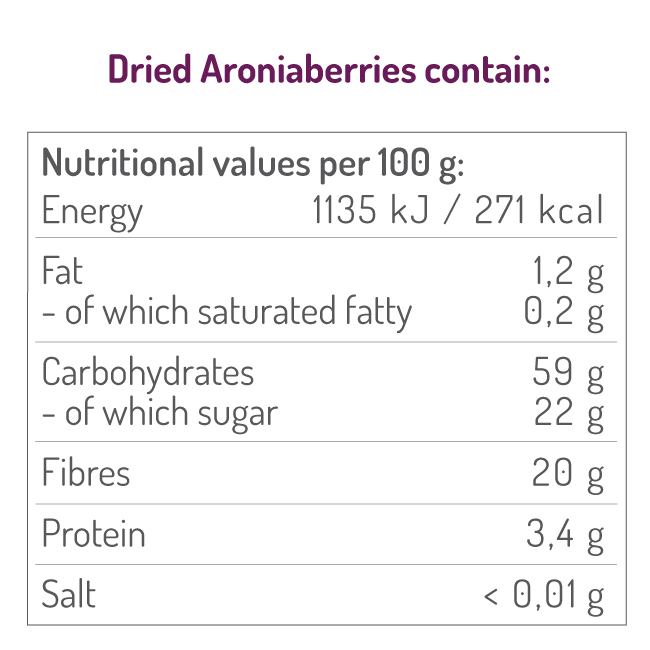

Aronia – Full Power Ahead!
Even after some years on the market, we try to surprise our customers with new things. With new products, changed recipes and much love for details, we not only want to present the diversity of Aronia, but also to show the passion that we connect with Aronia berries and other dark fruits.
We have managed to break through as a brand in the branch of Aronia and to convince many Aronia fans. We have introduced the Aronia berries behind the frontier of Saxony and local growing areas. We are not only unbelievably proud of this, but we would also like to thank you, those who are always on our side.
Sales of Aronia in Contrast to the Declining Consumption of Juice
Even though the consumption of juices has declined since 2007 according to statistic data (source: Statista), and it is only slowly growing now, we recorded a continuous increase in the sales of our Aronia berry juice. This shows us that the interest in the topic of healthy nutrition is increasing. We would like to give our customers information and explain the “why”,not just to put a juice on a shelf and hope that it will be sold. The consumers have the right to expect an explanation about the content, the use and why a direct juice costs more than a fruit juice drink, for example.
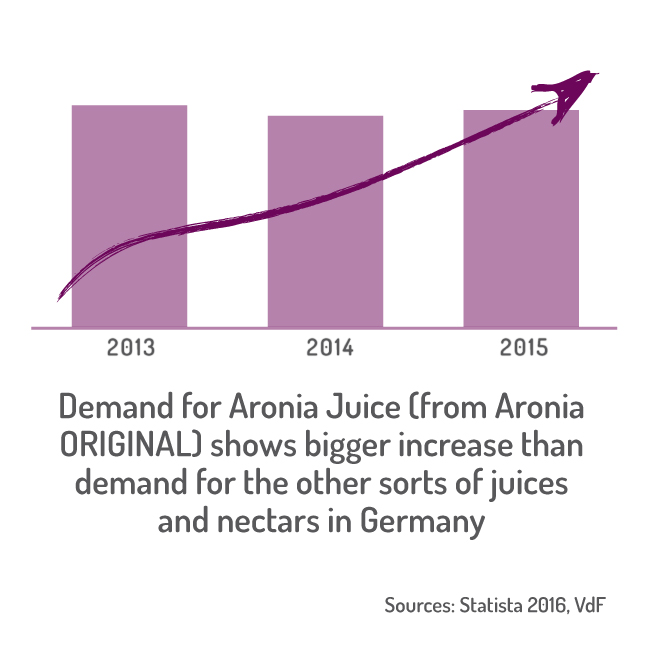
Based on what is mentioned above, it is only consistent that we pass on the successful Aronia story to other dark direct juices and facilitate the consumer´s decision with our uncompromising quality, clear designs, clear communication and guidance on the label. For this reason, we have introduced the 7 Lives organic direct juice series on the market.
